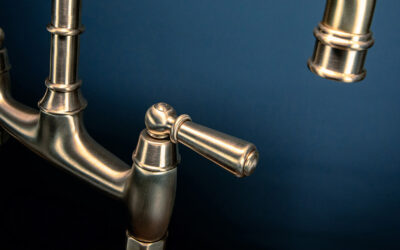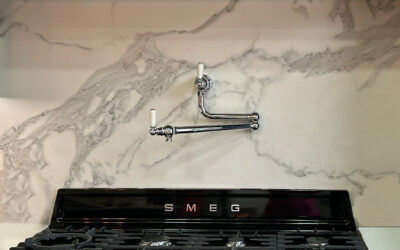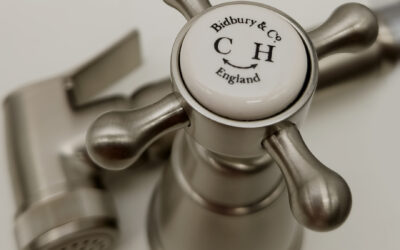We are all used to seeing a kitchen bridge tap, but what exactly is the difference between the two leg styles? Is there any benefit to having a tap with straight legs? Do they both operate in the same way? Do they both fit in the same positions? Can I swap from one style to the other?
Here we try to explain the difference between them and give you some valuable information to help you make the decision on which one is the right one for you!
CRANKED LEGS
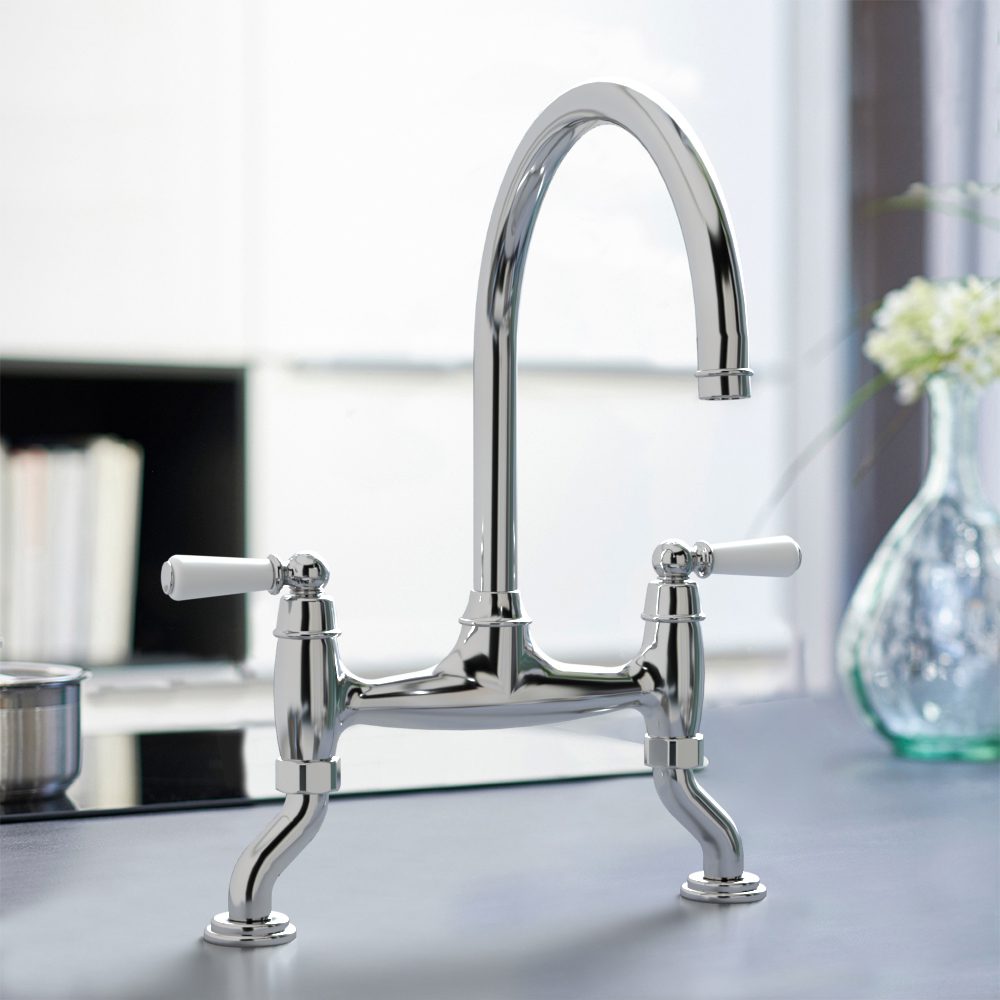
So the first and most valuable feature of a kitchen bridge tap with cranked legs is the fact it is suitable for a wider range of tap hole centres. This basically means that, if the two holes drilled in your worktop have been drilled at anything between 140mm and 260mm apart (from centre to centre), you can make this type of tap work. The legs on the tap rotate so the distance between them can be altered. Therefore, if you are removing an existing tap and the tap hole centres are 200mm, this will fit. If the holes are 260mm apart, again this tap will fit.
The distance between the holes will determine how the legs will be positioned. We have given some example images below to explain this. However, the most common distance is either 200mm or 260mm.
This tap design is especially useful if you have removed a tap where the holes have been drilled at an unusual distance – for example: 240mm, 230mm, 195mm, 255mm etc, etc.
STRAIGHT LEGS
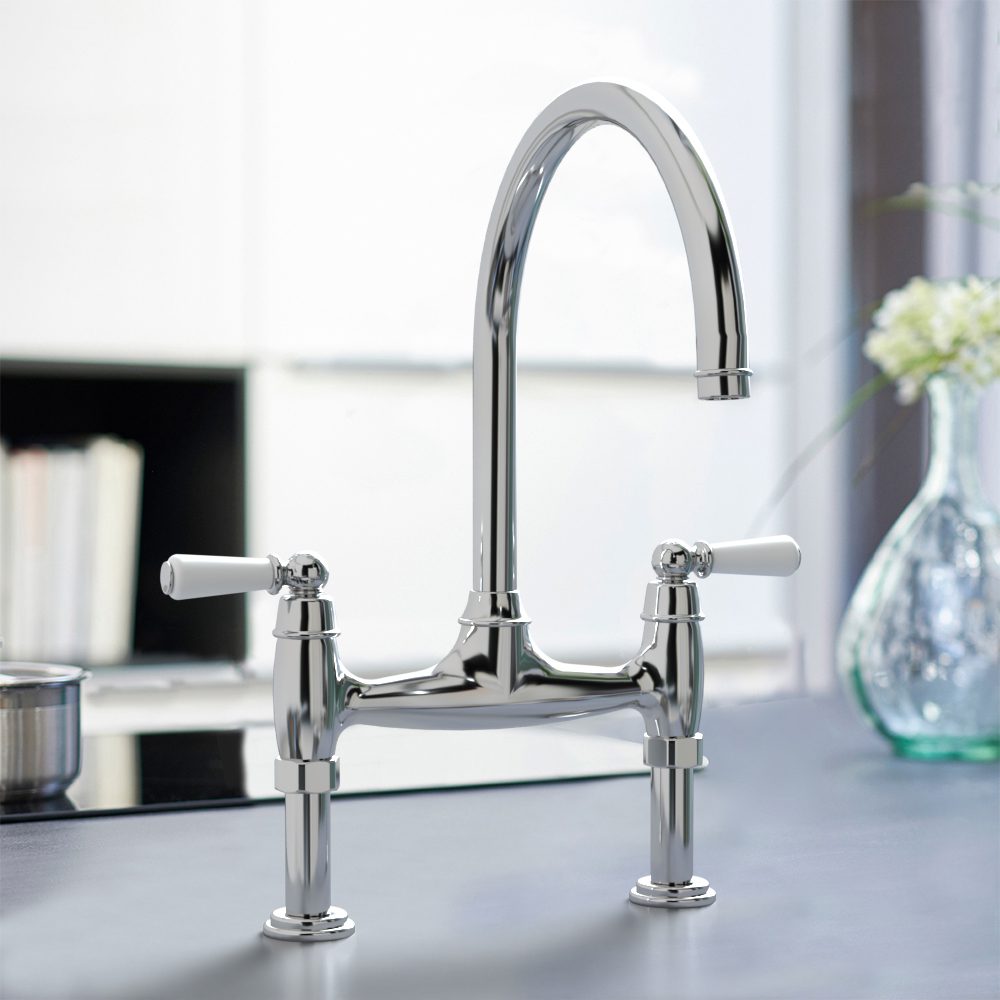
A bridge tap with straight legs (Moreton shown with the optional straight leg kit added) gives a more contemporary look and a more compact feel to the tap. With this option, the tap hole centres in your work surface must be 200mm and cannot be varied. There isn’t any particular advantage to having straight legs over the cranked option, it’s simply a case of style, design or just your own personal preference.
It’s worth remembering that the legs on the tap carry the water into the main body, where the temperature is mixed before exiting through the spout. You should always fit the hot water to your left hand side (when facing the taps) and the cold to the right. The Bidbury & Co. traditional bridge kitchen tap collection consists of the Moreton twin lever model, as well as the Sherborne crosshead control model. Both are available in a range of finishes and both have the option of fitting optional extras, including the matching solid metal handles (white porcelain levers are supplied as standard) and the straight leg kit (the cranked legs are supplied as standard).

